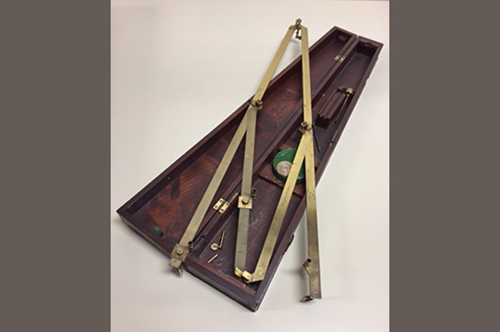Troughton (London) Pantograph
Item Details
- Category:
- Scientific Instruments
Edward Troughton (1753-1835), following an apprenticeship with his uncle John Troughton, went into business with his brother John Troughton, as makers of navigational, surveying and astronomical instruments. When his brother died in 1826 he enlisted William Simms as a partner and the firm became known as Troughton & Simms. As this instrument is simply signed “Troughton London,” one can assume that it was made by 1826.
The purpose of the pantograph is well described in this quote from the Collection of Historical Scientific Instruments at Harvard University: “The pantograph is a motion transfer mechanical linkage used to make re-scaled but otherwise identical copies of two dimensional drawings and maps. Users first select the desired ratio of reproduction by adjusting the placement of the smaller brass arms on the larger ones and by placing the writing implement holder at the appropriate increment. Users then trace the original two-dimensional image with the brass stylus and motion will be transferred through the pivot points of the parallelogram such that the drawing implement will draw the desired re-scaled image on the surface below.”
The pantograph measures 26 1/2 inches long, and when folded into the box, 4 1/2 inches wide. The box itself measures 27 3/4 inches by 5 1/4 inches at its widest.
As you can see in the photographs, this pantograph is in good condition, although one wheel has been dislodged from the main body.

